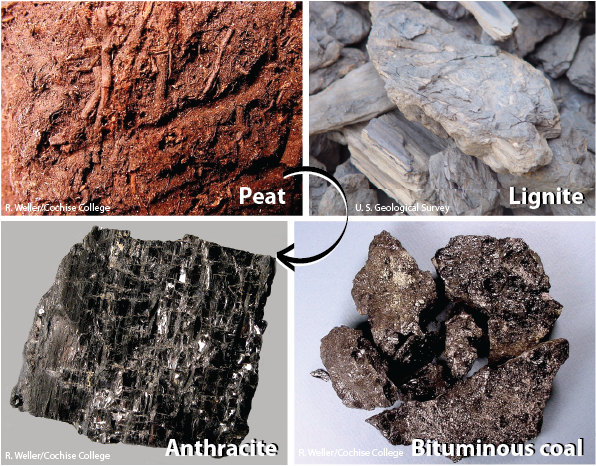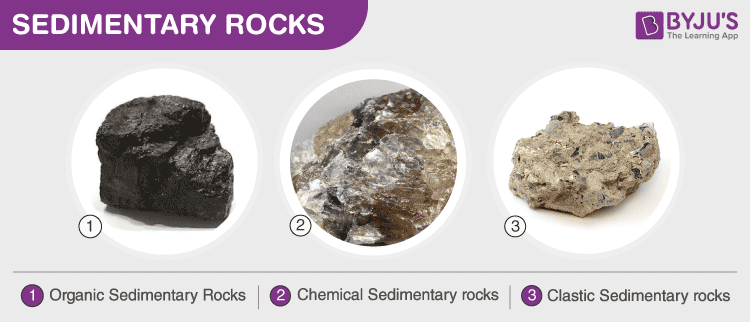Describe How Chemical and Organic Sedimentary Rocks Form
Bioclastic rocks are wholly or partial- ly comprised of compacted plant or animal remains. Clastic Sedimentary Rock a.

Sedimentary Rocks Types And How They Are Formed 2022 Rocks For Kids
Biochemical sedimentary rocks also form from ions in solution but organisms play an important role in converting those ions into calcium carbonate or silica body parts.

. The evaporite halite on a cobble from the Dead Sea Israel. Clastic sedimentary rocks like sandstone form from clasts or pieces of other rock. Clastic sedimentary rocks are made of sediments.
The sediments differ in size. Clastic organic biological and chemical. The salt will dissolve into the water.
Explore the features in formation of these two sedimentary rocks different kinds of. Precipitation is when dissolved materials come out of water. Organic rocks that are classified as clastic involve the deposition of plant.
Chemical sedimentary rock forms when minerals precipitate from a solution or settle from a suspension. Dissolved ions in fluids precipitate out of the fluid and settle out just like the halite pictured below Figure below. Sedimentary rocks formed by the crystallization of chemical precipitates are called chemical sedimentary rocks.
The process of these negative and positive ions naturally attracting to form bonds of solid mineral crystals is called precipitation. Chemical sedimentary rocks are formed when the water components evaporate leaving dissolved minerals behind. Deposition of weathered remains of other rocks.
Coral and algae are especially important limestone builders. It is common for caves within the Earth to be formed of chemical sedimentary rocks. The Bonneville Salt Flats near the Great Lakes.
Sedimentary rocks are formed by the deposition and subsequent cementation on the material at the Earths surface within the bodies of water. Chemical sedimentary rocks form when dissolved minerals precipitate out of water because of changing concentrations of chemicals. The Bonneville Salt Flats near the Great Lakes.
These minerals are carried away from their source and eventually redeposited or precipitated when the water evaporates away. Organic sedimentary rock forms from the remains of plants or animals. Sedimentary rocks are as the name suggests formed from the buildup of sediment.
Accumulation and the consolidation of sediments. This means they form over time on the surface of the Earth unlike other types of rock such as. The formation of clastic and organic rocks begins.
Chemical sedimentary rocks form by precipitation of minerals from water. Organic sedimentary rocks contain large amounts of organic matter such as from plant leaves and tree bark. Organic Sedimentary Rock - has organic debris such as leaves and roots mixed in with the rocks 3.
These rocks are formed in four ways. Oolitic limestones form in ocean shallows from the accumulation of oolites sandsized spheres of chemically. Chemical sedimentary rocks are made of minerals that precipitate from saline water.
Take a glass of water and pour some salt halite into it. Organic sedimentary rock is rock that forms from the. There are two types of sedimentary rocks referred to as either detritus or chemical.
Deposition of the results of biogenic activity. Composed mostly of the mineral calcite CaCO 3 limestones are usually formed by biochemical processes in shallow seawater. Chemical sedimentary rocks form by chemical precipitation that begins when water traveling through rock dissolves some of the minerals.
Clastic sedimentary rocks are dominated by components that have been transported as solid clasts clay silt sand etc. Chemical sedimentary rock forms when minerals precipitate from a solution or settle from a suspension. There are three different types of sedimentary rocks.
Biochemical or Organic sedimentary rocks form when plant or animal material is deposited and lithified. Rocks that were once swampy sediments or peat beds contain carbon and are black soft and fossiliferous. Organic sedimentary rocks are made from the bodies of organisms.
Sedimentary rocks of these kinds are very common in arid lands such as the deposits of salts and gypsum. Organic sedimentary rocks like coal form from hard biological materials like plants shells and bones that are compressed into rock. Chemical sedimentary rocks form when dissolved minerals precipitate out of water because of changing concentrations of chemicals.
A special type of sedimentary rock chemical sedimentary rocks form as sediments settle out of a solution. Chemical Sedimentary Rock - formed when water with dissolved minerals evaporates. There is some overlap between the two because almost all clastic sedimentary rocks.
Examples include rock salt dolomites flint iron ore chert and some limestone. Chemical sedimentary rocks form when dissolved minerals precipitate out of water because of changing concentrations of chemicals. Those classified as biochemical chemical generally involve some form of fossilization or the accumulation of fossilized organism or organism remains such as shell fragments.
Rich enough in carbon to burn coal is an organic sedimentary rock that is a widespread and important fuel source. Organic sedimentary rock is rock that forms from the. In contrast chemical and biochemical sedimentary rocks are dominated by components that have been transported as ions in solution eg Na Ca 2 HCO 3 etc.
Organic sedimentary rock forms from the remains of plants or animals. Minerals are crystallized List 2-4 examples of each class of sedimentary rocks 1. Chemical sedimentary rocks are rocks formed from chemical reactions of highly charged positive and negative ions within saturated water.
Some of the more common types of sedimentary rock include sandstone shale limestone and coal. Detrital rocks are composed of rock fragments or clasts and chemical rocks form through a chemical process. What are bioclastic rocks made of.
The most common chemical sedimentary rock is limestone. To view examples of chemical sedimentary rocks in the National Parks visit. Organic sedimentary rocks form from the accumulation and lithification of organic debris such as leaves roots and other plant or animal material.
Living creatures can help chemicals become.

Chemical Organic Sedimentary Rocks Youtube

9 3 Organic Sedimentary Rocks Physical Geology First University Of Saskatchewan Edition

Comments
Post a Comment